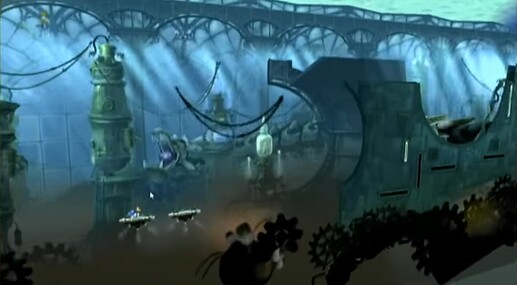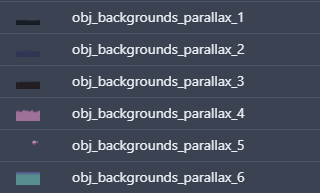So for sure if you’re in here you already know what is a parallax backgrounds, basically it’s that fake depth feeling in 2d games.
First off: I know there are layers in GD and I know you can make a parallax background.
But when I’m talking about Complex I mean games like Rayman Legands for example…
Like in here, I took a screenshot of a parallax backgrounds in the game (it was from a video on youtube)
Now as you can see the crazy amount of layers in this single scene…
How to achieve similar or even just close effect like this in GDevelop?
Like I can do the art no issues with that, the issue I’m having is how to make a parallax background out of the scene that I drew ?
The issue with GD at the moment is that it doesn’t have a 3D space to work in and see the layers separated like in the photo.
It’s going to crazy hard to test this out in engine!
Also testing a parallax background is kind of annoying like for example:
When you’re drawing your scene you don’t exactly know what the player will see when he jumps, like which layer will be moving and so on in engine because you’re drawing in PS
I have an idea but I don’t know if it will work or if it’s even worth it but how about this:
I create my art as normal, everything is on separate layers (This alone is very very complicated)
Now I take these layers (I have no idea how when you have like 2 million layers to work with) and open up a 3D program (I have no idea what program, if you know an easy one let me know about it) then I set up the layers then I add the character in and center the camera and on him and move him a bit up and down and left and right to see if the parallax background is working correctly inside that 3D program. I have no idea if this the right way to do it honestly but I’m just thinking here like, how though? this crazy amount of details to work with…
So here are my questions:
1- How to handle complex parallax backgrounds in GD in general, what is your ideas for this? I want you to get creative as possible, like imagine you need to create a scene with 6 or 7 separate backgrounds, what are the steps you’re going to take to achieve that?
2- You drew a great looking very detailed scene, how do you make this scene a parallax background in the first place, like what layers goes with what? how do you merge this scene to get exactly the right amount of layers you need in the scene? like when there are so many many layers to work with, how to handle this to create a parallax background out of it? this is going to be crazy hard and very time consuming to do…
3- How to test a complex parallax background inside GD ? or like easiest way to test it out, this is probably the most important question, how to know you’re drawing the right perspective and not making the pictures go out of bounds when the player jumps for example?
I mean in the photo up there, they draw just the things that appear to the camera and nothing else, how is that even possible? how did they test that? did they like test the game then see this picture falling out of bounds then adjusting it and test again and so on or what exactly, if that’s the case then wow that will take 5 years alone to do ![]() ?
?
Now for my next game if I feel like that parallax background is going to be super hard to do and very complicated, I might unfortunately drop it off from the whole game as I want to focus more on the gameplay and so on… working alone is already hard you know, but I might have other things to do to give depth to the scenes a bit more I’m not sure yet if parallax background is going to be something, but honestly when you have detailed environments it’s just going to be crazy hard to make it a parallax background, I’m not really sure, I know that parallax backgrounds give a great feeling in games but like I don’t really know, imagine working with maybe 6-8 layers in each scene and you have like 50 - 150 scenes, it’s just going to be impossible…
I hope there is a simpler way to it though, maybe I’m complicating things, hope you can help me with this.
Thank you as always and I’ll be reading your ideas and everything here…



